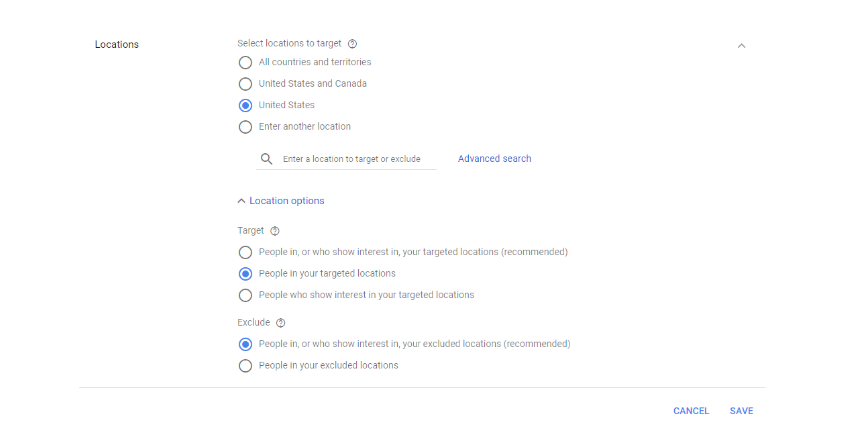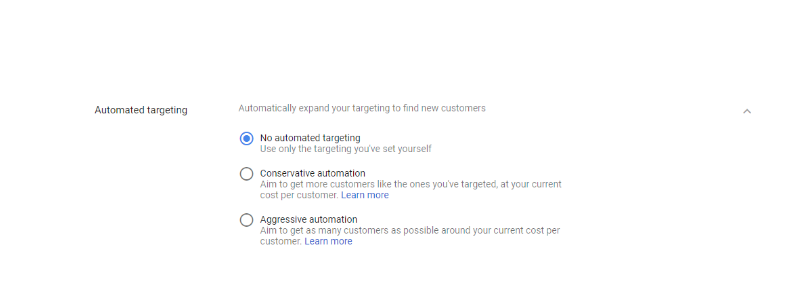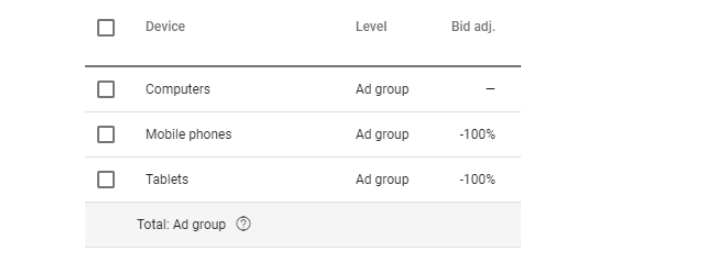The Google Display Network (GDN) can be a great top of funnel traffic source, if you know how to execute this correctly. The most exciting aspect of a GDN campaign is the opportunity to scale and effectively target a profitable audience. Let’s take a look at a few reasons why display campaigns fail, and how you can avoid these common pitfalls.
Campaign and Ad Group Settings
Your initial settings can make or break your performance before you even get started. First, make sure your campaign location settings are setup correctly. On the location drop down select your intended geographic target, and then select “Location Options”. Make sure that under “Target” you check off “People in your targeted locations”. If targeting “People in, or who show interest in”, you are likely to get impressions and ad spend from people outside your intended target.
Next you will want to exclude in-app ads on mobile and tablet devices within campaign settings. Often, these are the lowest quality clicks and result in a very high bounce rate. Also, in-app ads will eat up a significant portion of your daily budget, if left unchecked. Make sure your “Devices” dropdown looks like the example below:
The last setting to update at the campaign level is “Content exclusions”. This is not absolutely necessary for Google Display Network success, but is recommended for brand protection. We recommend excluding all of the “sensitive content” categories.
At the ad group level, it is important to disable “Automated targeting”. If “conservative” or “aggressive” automation is enabled, Google will serve impressions outside of your intended targeting and you will have little control of how or where your ads are being served. Under the “Automated targeting” drop down at the ad group level, select “No automated targeting”.
Lastly, make sure you are monitoring your “devices” performance. Often, even with in-app ads excluded, you will get a majority of your traffic from mobile devices. Depending on your unique situation, this could be good or bad. Make sure you are monitoring your KPIs by device and make any adjustments needed.
Audience Targeting for Google Display Network
The real power of Google Display Network campaigns comes from layering audience criteria to craft the best combination for your business. When setting up an ad group you can choose to target by keywords, interest, demographics, topics, or placements. The best results typically come from combining multiple audience criteria by setting your “Targeting setting” to “Targeting” vs “Observation”.
When “targeting” is selected your ads will show when all audience selections with the “targeting” selection match up. For example, you target the keywords, topic, age, and gender with the “targeting” setting selected. Then your ads will only show on pages that are related to your “keywords”, on sites that relate to your topic, and to people who match your age range and gender. If you had “observation” checked as the targeting setting, each of the criteria you listed would be treated as their own independent audience.
Start or adjust your GDN campaigns following these guidelines and you will avoid many of the traps keeping your from your performance goals.
Were these Tips on Google Display Network Helpful?
there are more ways to draw traffic that converts than a robust PPC strategy. Download our FREE guide on the WEBITMD Growth Stack and learn how paid media, SEO, Inbound Marketing and other strategies all work together to help organizations just like yours hot their growth goals!













(1).jpg)

.jpg)



![5 Reports to Elevate Your HubSpot Sales Dashboard [+ Examples]](https://2363531.fs1.hubspotusercontent-na1.net/hub/2363531/hubfs/Imported_Blog_Media/6-winning-examples-of-a-hubspot-sales-dashboard-2.png?width=767&name=6-winning-examples-of-a-hubspot-sales-dashboard-2.png)

